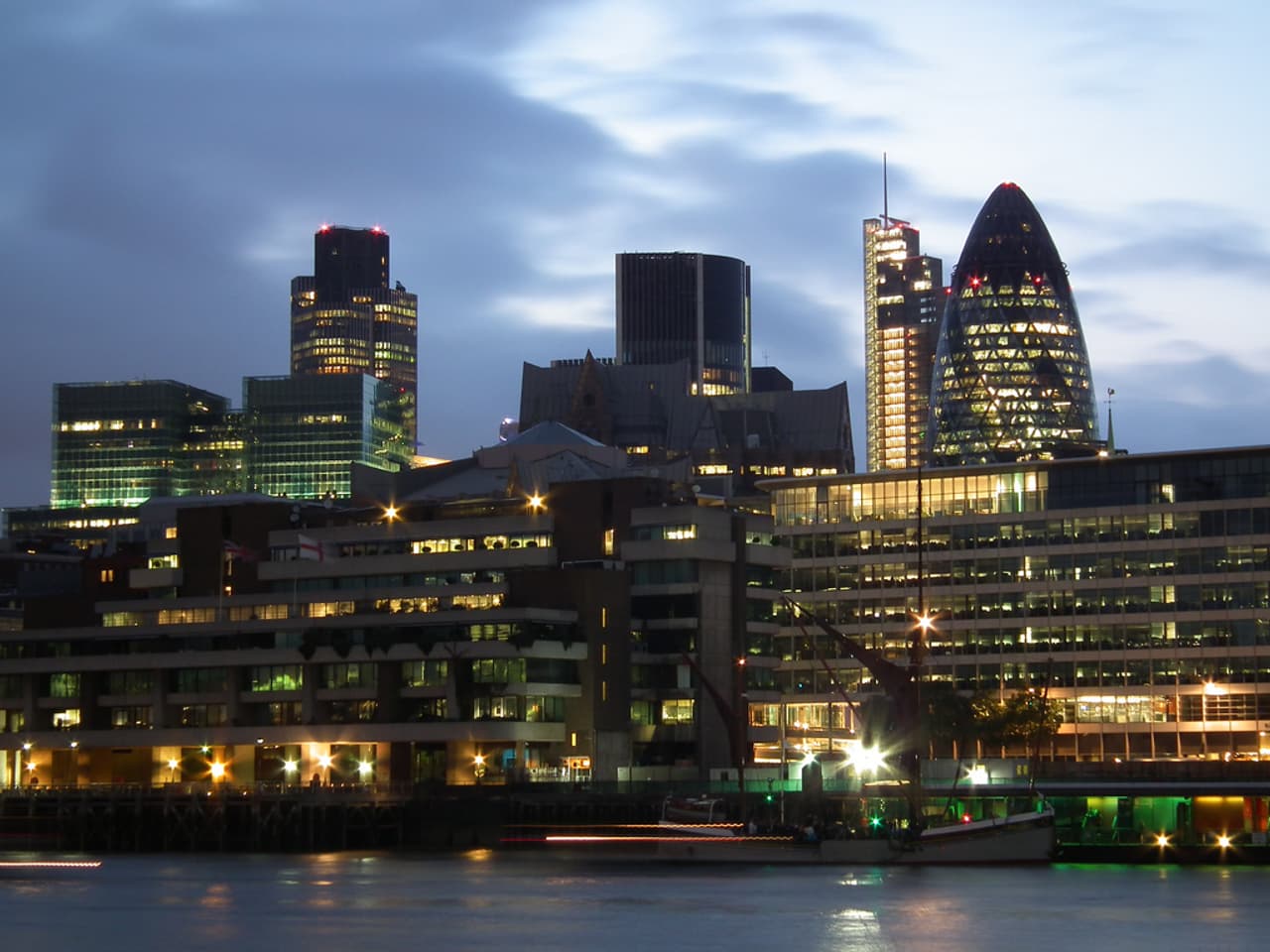
How the Bureau calculated the size of the finance lobby
The City of London is championed by over 150 organisations and groups.
The size and scale of Britain’s financial lobby has never been quantified – until now.
Two Bureau journalists, Nick Mathiason and Maeve McClenaghan, spent over four months investigating Britain’s most powerful public affairs machine. They were supported at various stages by former Bureau journalist David Pegg and a small number of journalism students on work experience. These were Ian Silvera, Tom Wills and Isabel Camano.
During this project, we interviewed over 40 lobbyists and public affairs staff and had email contact with well over 150.
This needs to be read by anyone interested in lobbying in Britain… it shows that if you are prepared to dig hard enough there is a huge amount of important material out there.’
Michael Moran, University of Manchester
Three senior academics have reviewed our methodology. This is outlined below.
Michael Moran, professor of government at University of Manchester Business School, described our financial lobby study as ‘an absolutely scrupulous piece of investigation’.
He added: ‘It needs to be read by anyone interested in lobbying in Britain, not alone by those like me who are especially concerned with the City of London. Academics often complain about the problem of studying secretive institutions like those in the City. This work shows that if you are prepared to dig hard enough there is a huge amount of important material out there.’
Aeron Davis, professor of political communication at Goldsmith College, and Dr Scott James, lecturer in European public policy at King’s College London, were the other academics who reviewed our study. Their suggestions and criticisms were acted on, with editorial oversight.
Related article: Revealed – The £93m City lobby machine
Methodology
In total our financial services lobby database is composed of 129 organisations and 5 industry groupings (including think tanks, management consultancies, law firms, Members of the House of Lords and individuals who donated significant political funding).
The database is divided into categories. These are listed as:
1) Financial services firms (mainly banks and insurance firms)
2) Industry and trade bodies
3) Public affairs consultancies with financial services clients
4) Public relations consultancies that offer public affairs services to financial services clients
5) Law firms that offer public affairs services to financial services clients
6) Management consultants that offer public affairs services to financial services clients
7) Financial services firms who donated to the main three political parties in the calendar year July 2010 to June 2011
8) Individuals connected to financial services who donate to the main three political parties
9) Think tanks that receive contributions from financial services firms and publish financial services-related papers
10) Lords who have a direct financial relationship with financial services firms
11) The City of London Corporation
Selection criteria:
1) We initially selected companies and industry bodies by going through the respondents to the Independent Commission on Banking and the UK-based respondents to the recent EU Mifid consultation process. This indicated they were engaged in public policy.
2) We also identified companies whose staff sat on the CityUK public affairs committee. TheCityUK is considered one of the country’s most important financial services advocacy organisations.
3) Subsequent research yielded additional industry bodies with an extensive track record in public affairs advocacy.
4) We selected public affairs consultancies using the Association of Professional Political Consultants (APPC) register, which details public affairs clients on a quarterly basis. Any client retained over the most recent four quarters we judged to be a retained client.
5) There are a number of public relations firms who are not APPC members but offer public affairs services to clients. We identified those using the PRCA register and also conducted interviews with senior figures in these companies to establish revenues and staff levels associated with financial services clients.
6) We have not included PR firms with substantial financial services clients who do not offer public affairs services, such as Tulchan, Powerscourt or Hudson Sandler.
7) We selected law firms after interviews with a number of lobbyists who suggested our study would be incomplete if they were excluded. The Legal 500 ranking was the basis for our work on which law firms provide financial services public affairs.
8) We selected the four biggest management consultants on a similar basis.
9) We asked the UK’s major think tanks to reveal how much money financial services firms donated or contributed to their revenue base.
Basis for calculations
We accessed accounts of all organisations and companies using Companies House to gauge turnover figures and membership income. Some industry bodies and public affairs firms qualify for small companies exemptions so it is not possible to see their turnover. In these instances we followed up with direct questions to the relevant bodies. We then directly contacted organisations on our database, checking revenue details and staff levels associated with public affairs activities on behalf of financial services firms.
Public affairs firms and PR firms that offer public affairs
1) Many public affairs firms were helpful and told us the number of staff working for their financial services clients and the fee revenue they receive from them.
2) Where consultancies chose not to cooperate, we estimated each retained client as listed on the APPC or PRCA register to be worth £100,000 a year. We then informed public affairs firms of our methodology.
Senior public affairs industry executives we spoke to agree that an annual fee of £100,000 is at the low end of the public affairs client fee spectrum. Annual public affairs contracts can be as much as £200,000, and more if senior executives demand ‘face time’ with politicians or top regulators.
Banks and other companies
1) We identified banks that responded to major government policy consultations. And we selected financial services firms whose public affairs staff are committee members of TheCityUK, considered one of the most important financial services advocates and lobbyists.
2) Not onefinancial services firm would state how much money they spent on public affairs. Only the Building Societies Association disclosed its public affairs operational budget. Most gave us the number of public affairs staff they directly employ.
3) We arrived at an average wage of £80,000 for public affairs staff through conversations with an experienced executive at one of the word’s biggest banks. We also noted that £80,000 is an average bank communications wage, as reported in the Evening Standard.
4) On top of the £80,000, we added the appropriate employers’ National Insurance rate, 5% pension and 10% expenses and benefits to create a £98,832. This is the average annual ‘on cost’ of a public affairs financial services employee. We then multiplied £98,832 by the number of public affairs employees to get a total company figure.
Note: The pension contribution is at the low end of the spectrum and the estimate of expenses was deliberately pitched low to ensure we have not inflated staff costs. An ‘on cost’ rule of thumb is put at 50%. Ours is 25%.
5) We have not included:
a) Public affairs operational costs such as events, conferences and hospitality because these figures were not disclosed. We do include them when they are available – for instance, the City of London Corporation’s, thanks to a leak (see below) and the commendable transparency of the Building Societies Association.
b) The fees paid by banks and financial institutions to public affairs consultancies in the banks and financial institution fields. This has been restricted to the client fee figure used to estimate public affairs fees. In this way, we have not double counted income or expenditure.
c) We have also not included any element of British banks’ chairmen and chief executive salaries. We decided to omit this from our total as their precise advocacy role is hard to properly define.
Industry bodies
We pulled the revenue of industry bodies from Companies House. We then asked industry bodies what proportion of revenue goes to public affairs departments and operations.
There was a mixed reaction:
1) Some replied positively and gave us precise figures.
2) In some instances, we estimated the figure on the basis of inside knowledge or the scope of the trade body and the organisation in question agreed to our estimate.
3) Some trade bodies chose not to comment. In this instance, we assessed their remit through research and calculated roughly what proportion of revenue we believe should be attributed to public affairs. The industry body was then made aware of the calculation and given an opportunity to comment. Many did. Some chose not to offer feedback despite repeated opportunities to do so.
4) Some associations such as the British Bankers’ Association or the Association of British Insurers do not publish accounts. In these instances, we made estimates based on interviews with many current or former staff and contacted the relevant association to give them an opportunity to comment. We also gained indications of fees paid by members and extrapolated those figures to arrive at estimates.
5) Some industry bodies did not want to be part of our study. But all selected have engaged in policy consultations and their involvement has been assessed with great care.
6) We established the number of public affairs staff at the Bank of England but not the Financial Services Authority.
Law firms
1) On the basis of repeated comments by senior public affairs professionals, we decided to include lawyers representing banks and other financial services in public affairs dealings with government and regulators.
2) The legal 500 indicated Clifford Chance, DLA Piper, Hogan Lovells, SJ Berwin and Covington & Burling are the most significant companies offering public affairs services to financial services firms. The inclusion of the above firms was endorsed by a public affairs partner of a leading law firm.
3) None of the above law firms – which have a combined revenue base exceeding £2.7bn – would reveal their financial services revenues from public affairs.
4) So we put a £10m combined public affairs UK revenue estimate – equivalent to less than 0.004% of those companies’ revenues. We ran this figure past the firms on our database. None objected.
Management consultants
1) Fiona Czerniawska is an analyst of the management consultant sector recommended by Accenture. She gave a ‘generous estimate’ of about £50m of UK management consultants’ fees is gained from public affairs work. This was based on her assumption that 1% of the big firms’ revenue was from public affairs. Taking a cautious approach we have taken just 10% of this £50m figure and attributed it to public affairs work specifically for financial services clients, taking the view that this reflects the impact of the financial services sector on Britain’s GDP.
2) We are more than confident that at least £5m a year is spent on public affairs work for the financial sector by management consultants, as in practice the financial services sector accounts for much more than 10% of the fees paid to the big consultancy firms. According to one well regarded survey, by Source for Consulting, the financial services sector accounts for as much as a third of fees paid to management consultants in the UK. On this basis, public affairs revenue from the financial services sector could be as high as £17m. We opted for the lower figure.
Think tanks
1) We contacted 18 of the UK’s biggest thinktanks asking them to detail exactly how much money they receive from financial services.
2) Think tanks often produce financial services papers that are used by the sector to justify policy positions. So of the money donated by the sector to thinktanks, we have taken 25% as a public affairs cost to add to our overall figure.
Political donations
1) We have included political contributions from financial services firms and those individuals connected to financial services firms in the year July 2010 to June 2011.
2) It is clear that political donations allow access to policy makers and is seen as part of lobbying.
3) The information came from the Electoral Commission and we have assessed all three major UK parties.
Lords
1) We identified 124 Lords, or 16% of the total number, who are paid advisers or directors working for financial services companies.
2) A recent survey established the average UK non-exec is paid €110,00 (£89,160).
3) We have multiplied the 124 Lords by £89,160 and taken 10% of that figure as a lobbying contribution.
4) The overall salary figure is an under-estimate as many Lords are executive directors and many others have multiple directorships. We only factored in one salary per peer.
Father William Taylor
City of London Corporation
The City of London Corporation owns much of the real estate within the Square Mile. It is also its local authority responsible for policing London’s financial district. Crucially, the Corporation is the self-appointed guardian of the UK’s financial sector with a team of lawyers scrutinising every piece of parliamentary legislation. It works closely with the Treasury, Foreign Office and the Department of Business, Innovation and Skills to ensure its interests are protected and enhanced.
Related article: Streets paved with gold – The local authority working for the banks
1) Ceremonial
a) Leaked City of London Corporation annual accounts state the aim of major national set-piece occasions and small receptions – where the City admits politicians and City figures meet in private – is ‘to increase the emphasis on complementing hospitality with business meetings consistent with the City Corporation’s role in supporting the City as a financial centre.’
b) The statement adds: ‘The office works closely with the Foreign & Commonwealth Office, UK Trade & Investment and other agencies in developing opportunities for a City business element during such visits.’
c) This suggests the Corporation uses these events to lobby in league with Whitehall.
d) Father William Taylor is a former City councillor. He gave us an insight into the role of state dinners and set-piece events such as the PM’s Guildhall speech, the Chancellor’s speech and those made by the Mayor of London. He told the Bureau: ‘You are getting in a room all the powerful people you want to influence. You are getting them handsomely drunk. You are applauding them. It’s literally intoxicating.’
e) Senior City of London Corporation staff suggest grand dinners are explicit lobbying occasions and that’s their main purpose. Bureau reporter Nick Mathiason also attended Mayor Johnson’s 2009 address at the London Councils Mansion House event and saw this first-hand.
Conclusion
In our judgement given the above; a substantial amount of the £6,402,000 spent on ceremonial activities is for public affairs and lobbying purposes. This, we estimate, is 75% of that figure.
Calculation
Ceremonial budget: £6,402,000 (latest approved budget 2011-12)
(Public advocacy element = 75%: £4,801,500)
Total: £4,801,500
2) Mayoralty and shievalty
a) The object of mayoralty and shievalty is described in the City’s Cash document:
• ‘to promote the UK-based financial services industry and related businesses both home and abroad’ and that the overall objectives are to:
• ‘provide the official residence of the Lord Mayor and RUN [our emphasis] the required programme of hospitality and meetings’
• in addition to ‘plan and deliver the Lord Mayor’s programme including visits abroad, in the City and elsewhere in the UK’
Conclusion
We think it is accurate to take half this figure towards public affairs/advocacy.
Calculation
Budget = £7.155m (Corporation says net figure is £5.554m)
Public affairs element = £3.5775m (net figure: £2.777m)
Total: £2.777m
3) Economic development
The Economic Development Office business plan states:
1) ‘The City of London Corporation is making a significant contribution by seeking to influence policy through an evidence-based and politically neutral debate on the future shape of the financial services industry, including regulatory reform in the UK, EU and wider G20. The financial crisis severely dented the relationship between governments, central banks and regulators in the UK, wider EU and US, and the financial services industry, primarily banking. EDO plays an important role in bridging the gap between private and public sector, and facilitating constructive dialogue.’
2) ‘The City Corporation provided the impetus behind, and funding for, TheCityUK, an independent and practitioner-led body designed to coordinate promotional efforts for the financial services industry. Support includes provision of staffing for the International Regulatory Strategy Group (IRSG), a City Corporation-led body which also serves TheCityUK. The success of the IRSG and TheCityUK in engaging major stakeholders has been key to influencing regulatory and policy decisions, particularly in regard to the EU agenda, and the City’s business constituency has indicated that it greatly values our engagement in these testing times. Close coordination is required to ensure that TheCityUK complements the work of the City Corporation and that duplication is avoided.’
3) The City’s EDO office suggests its successes include:
• Positive impact on UK and EU regulatory issues, and increased City of London profile in engagement with EU institutions, MEPs, and EU member states, as well as the coalition government;
• TheCityUK launched with membership exceeding expectations, and City Corporation’s role recognised by Government and City stakeholders;
• Role and impact of the International Regulatory Strategy Group (IRSG) as a source of industry expertise and advice recognised by the European Union and UK government e.g. influence on Alternative Investment Fund Management regulations;
• Establishment of the China Advisory Council, a unique body comprising senior Chinese business figures. The first meeting was held in London in November 2010;
4) The Economic Development Office is organised into the following interlinked teams:
Research; European Affairs; International Affairs; City Affairs; Inward Investment Service; City Property Advisory Team; Corporate Responsibility; Regeneration
Conclusion
1) It seems clear that the Economic Development team provides a vital public affairs function.
2) The City’s Economic Development office also commissions work which has been cited in letters written to Treasury ministers to back City advocacy positions.
3) Given the apparent dual role of the Economic Development team, we believe it is reasonable to attribute 62.5% of its budget to a public affairs function.
4) However, there is a possibility that non-public affairs Economic Development work, such as regeneration, soaks up more budget spend. As such, we judge the public affairs element to be half of its £3.41m budget – or £1.705m.
Calculation
Budget = £3.41m
Public Affairs Element = £1.705m – (half of budget representing proportion of public affairs focused work)
Total
£1.705m
4) City Remembrancer’s Office
Within the City Remembrancer Office is the parliamentary affairs team. This
‘is responsible for looking after the City’s interests in Parliament with regard to all public legislation (whether Government, Private Members’ or Ten Minute Rule Bills proposed subordinate legislation including legislation originating from the EU) and also all private promotions. The subject matter dealt with relates to all City Corporation activities and includes the Police Authority for the City and aspects of the City Magistracy and the Irish Society. In addition, the Office undertakes parliamentary work in collaboration with organisations which the City Corporation supports as part of its role of maintaining the City as the world’s leading international financial centre. The Office’s close working relationship with the Economic Development Office (particularly in relation to the European Parliament and legislation initiated by the Commission) and Mansion House are important in this regard.’
The team is extremely active responding to parliamentary select committees.
Calculation
Budget = £5.954m
Public Affairs Element = £790,656
(Quarter of 26 staff employed relates to public affairs/research from within the Remembrancer Office including six parliamentary lawyers plus Double and Hoban. Eight staff at average on cost £98,832 = £790,656)
Total = £790,656
City of London Corporation public affairs engagement overall total
Ceremonial: £4,801,500
Mayoralty & Shrievalty: £2,777,000
Economic Development Office: £1,705,000
Remembrancer: £790,656
Total: £10,074,156
Note
1) Not included: over 40 people in Media Office.
2) The City of London Corporation disputes our conclusions.
3) The document ‘City’s Cash’ is not published by the Corporation. The leaked version is here.
What we have left out
1) We have not included the British public affairs engagement of the UK’s Crown Dependencies. These are the offshore financial centres: Jersey, Guernsey and the Isle of Man.
2) We have not included the public affairs capability of the Financial Services Authority or the bodies that will shortly replace it.




